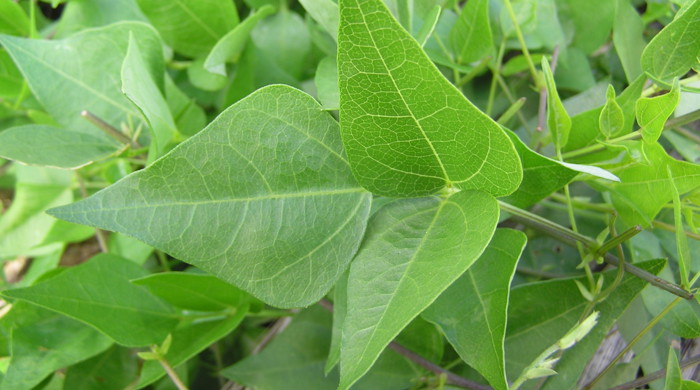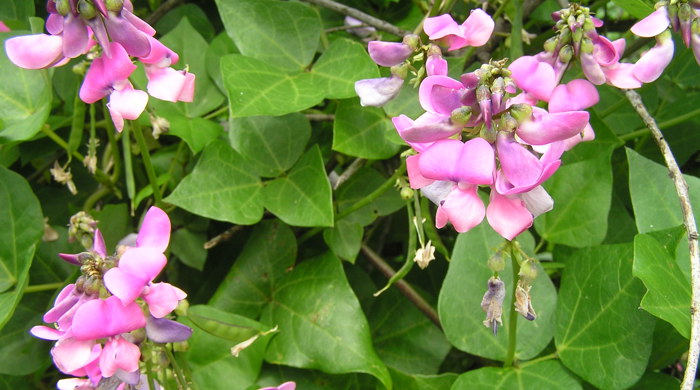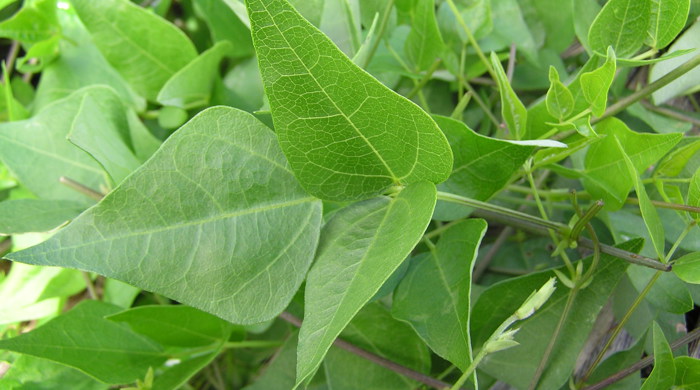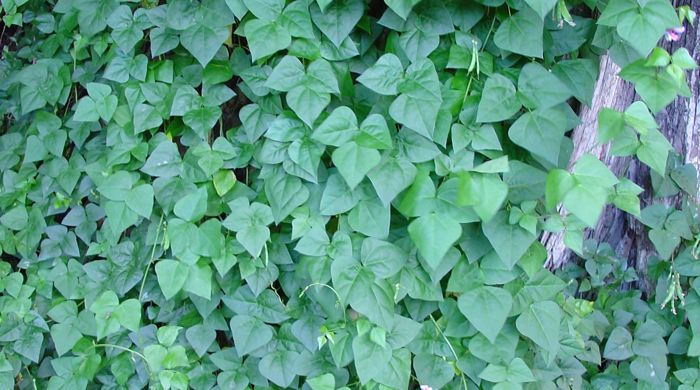Dipogon lignosus
Mile-a-minute
Family: Fabaceae
Origin: South Africa
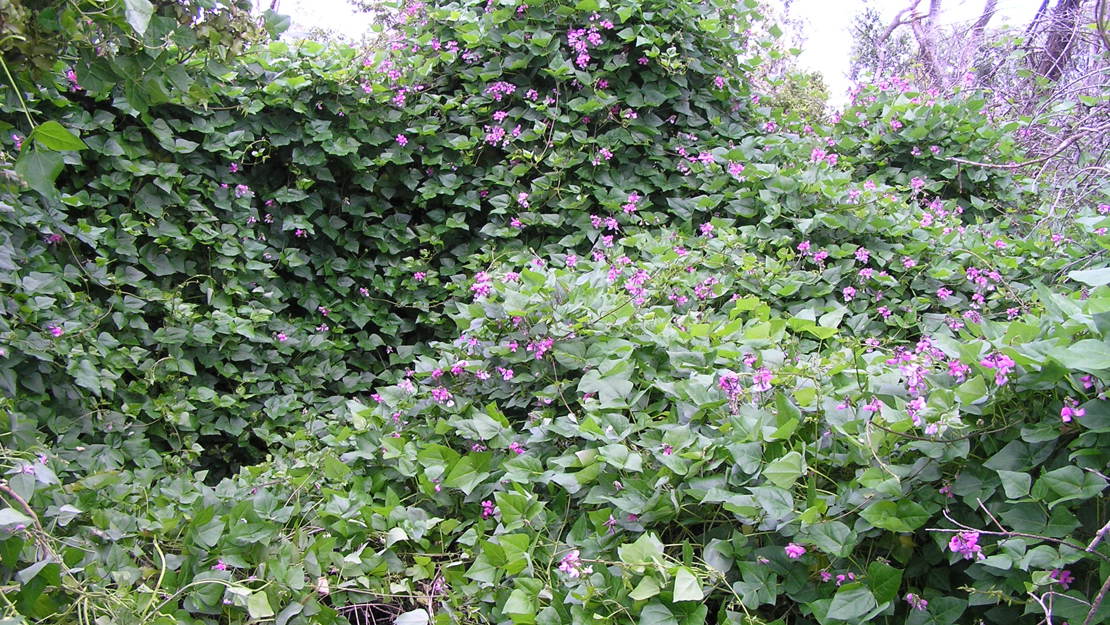
Regional Pest Management Plan (RPMP) status
- National Pest Plant Accord Species
- Aotea — Progressive containment
- Whole region — Sustained control
General description
Evergreen perennial climber. Leaves are made up of three roughly triangular/heart-shaped leaflets. Flowers are pea-like, white/pink/red and borne in July – January. Seedpods are sickle-shaped.
What you need to know
To help protect our environment:
- You must not breed, distribute, release or sell mile-a-minute. As mile-a-minute is a National Pest Plant Accord species, these restrictions apply within the Auckland region and across the whole of New Zealand.
- You must not plant mile-a-minute within the Auckland region, unless you are transferring an existing plant on your land to another location within the boundaries of the same property.
- You must destroy any mile-a-minute on land that you occupy if it has been planted in breach of the above rules and you are directed to do so by an authorised person.
Auckland Council will manage mile-a-minute at all sites within the Aotea/Great Barrier Island group where it is known to occur.
If you see mile-a-minute anywhere on Aotea/Great Barrier Island group, please report it to Auckland Council at pestfree@aucklandcouncil.govt.nz.
Habitats
Scrubland, forest and riparian margins, wetlands, coastal areas, roadsides, urban areas.
Dispersal
Seeds dispersed by explosive dehiscence and water. Human-mediated dispersal through dumping of garden waste and deliberate plantings.
Impact on environment
Smothers trees and destroys forest structure. Nitrogen fixer. May facilitate the establishment and growth of exotic plants.
Control
Site Management
Cut and pull vines away from desirable trees and native plants before foliar spraying. Follow up treated areas 3 times per year. Encourage natural regeneration of native plants or replant treated areas where possible after 2-3 treatments to establish dense ground cover and minimise reinvasion.
Recommended approaches
Physical control
Method: Cut vines and leave upper stems to die in trees or dig out.
Plant parts requiring disposal: All parts.
Disposal options: Remove to greenwaste or landfill if practical.
Biocontrol
Biocontrol is currently not available for this species.
Community agrichemical control recommendations
No qualifications: Cut stump and paste freshly cut base of stems with metsulfuron gel.
Basic Growsafe certified: Cut stump and spray freshly cut base of stems with 1g metsulfuron-methyl per 1 L of water.
Certified Handler/Experienced agrichemical user: Foliar spray with 3g metsulfuron-methyl per 10L of water and 20ml penetrant.
Caution: When using any herbicide or pesticide please read the label thoroughly to ensure that all instructions and safety requirements are followed.
